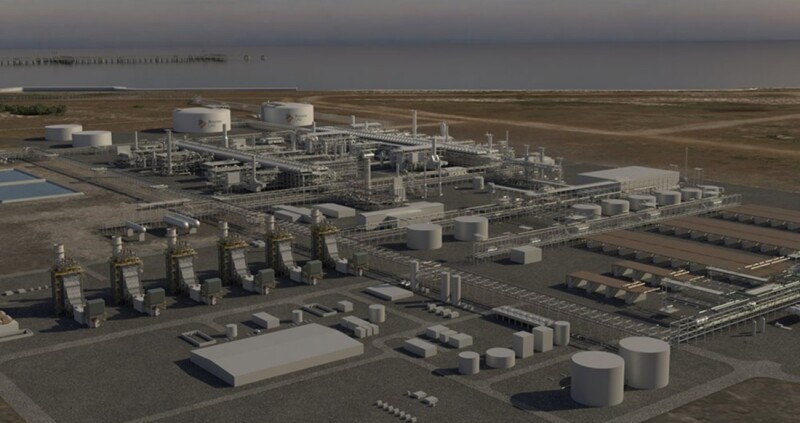ExxonMobil has lifted force majeure on its $30 billion Rovuma liquefied natural gas (LNG) megaproject in Mozambique as security concerns ease, clearing the way for an anticipated final investment decision (FID) in 2026 and first LNG exports by 2030.
“We have lifted force majeure for the Rovuma LNG project,” Bloomberg quoted an Exxon spokesman on 20 November, capping a buildup of comments shared with media by chairman, CEO and president Darren Woods during the 10-day COP30 conference in Belém, Brazil, suggesting an imminent announcement. COP30 closed 21 November.
Woods emphasized in an interview at the start of COP30 on Bloomberg’s “Zero” podcast that ExxonMobil will “move quickly” on Rovuma LNG as the US supermajor aims to surpass 40 mtpa of LNG sales by 2030, expanding its global LNG footprint with projects such as Golden Pass in the US and Qatar’s North Field East.
On the Heels of TotalEnergies
In October, TotalEnergies ended its force majeure on a competing East African megaproject, the $20.4 billion Mozambique LNG facility near ExxonMobil’s site on the Afungi Peninsula, which is transforming into an East African hub for LNG exports via the Indian Ocean, avoiding bottlenecks such as the straits of Hormuz, which can disrupt Middle East exports.
TotalEnergies said it would resume construction as soon as the government agrees to a revised budget and schedule that targets shipping first product in 2029.
Both companies declared force majeure in April 2021 after an Islamic State-affiliated militant attack and mass killings at the town of Palma near the construction site, but the 4½ years that have passed since appear not to have been wasted.
Downtime Used Wisely
Using the delay to refine the plant’s design, Exxonmobil announced in 2023 it would replace the two liquefaction trains of 7.6 mtpa each that were originally planned, with 12 modular trains of 1.5 mtpa each, thus boosting production to 18 mtpa from 15.2 mtpa while bringing the plant online more quickly and with less risk to personnel.
In November 2024, ExxonMobil and its partner Eni awarded engineering, procurement, and construction (EPC) contracts for onshore-based liquification facilities and front-end engineering design (FEED) for upstream offshore infrastructure.
ExxonMobil leads construction and operation of onshore facilities and related liquefaction trains, while Eni leads upstream developments and operations. Other partners in Rovuma LNG include China National Petroleum Corporation, Abu Dhabi National Oil Company’s international investment company XRG, Korea’s Kogas, and Mozambique’s state-owned ENH.
Small Steps Initiated Cash Flow
In a strategy to expand monetization of the project during the hiatus, Eni and its partners declared FID in October 2025 to build a second floating LNG (FLNG) unit to double LNG production from the deepwater Coral gas field to over 7 mtpa. With the first LNG scheduled to drop in the second quarter of 2028, the 3.55-mpta capacity Coral Norte FLNG unit will be an identical twin to the Coral Sul unit, which has been producing from six subsea wells tied back to the FLNG unit at the southern end of the Coral gas field since the fourth quarter of 2022.
The deepwater Area 4 block contains more than 85 Tcf of natural gas, which will provide resources for multiple LNG projects. Rovuma Mozambique LNG’s upstream assets include the Eni-discovered Coral, Mamba Complex, and Agulha reservoirs, holding an estimated 2.4 Tcm of gas. Eni also holds exploration rights to offshore blocks A5-B, Z5-C, and Z5-D in the Angoche and Zambezi basins, according to its website.
One seldom-mentioned LNG project that pales in size to the Rovuma LNG and Mozambique LNG’s export facilities is the import-oriented Matola floating storage and regasification unit, which would regasify LNG imports to supply regional domestic needs including South Africa’s.
Regional Gas Supply Including South Africa
A joint venture between the Beluluane Gas Company (BGC), TotalEnergies, Matola Gas Company, and South Africa’s natural gas Gigajoule group, with some ENH involvement, is developing the project to permanently moor the 2.5 mtpa unit in Matola harbor near Mozambique’s capital of Maputo.
The unit would connect via pipeline to a proposed 2,000-MW gas-fired power plant in the Beluluane Industrial Park and support electricity generation for Mozambique and South Africa. TotalEnergies would handle LNG imports.
An FID has yet to be taken, though BGC completed FEED in mid-2021, according to its website. The project then stalled because of the same militant activities that had destabilized the Cabo Delgado province in northern Mozambique, causing ExxonMobil, Eni and TotalEnergies to declare force majeure.


